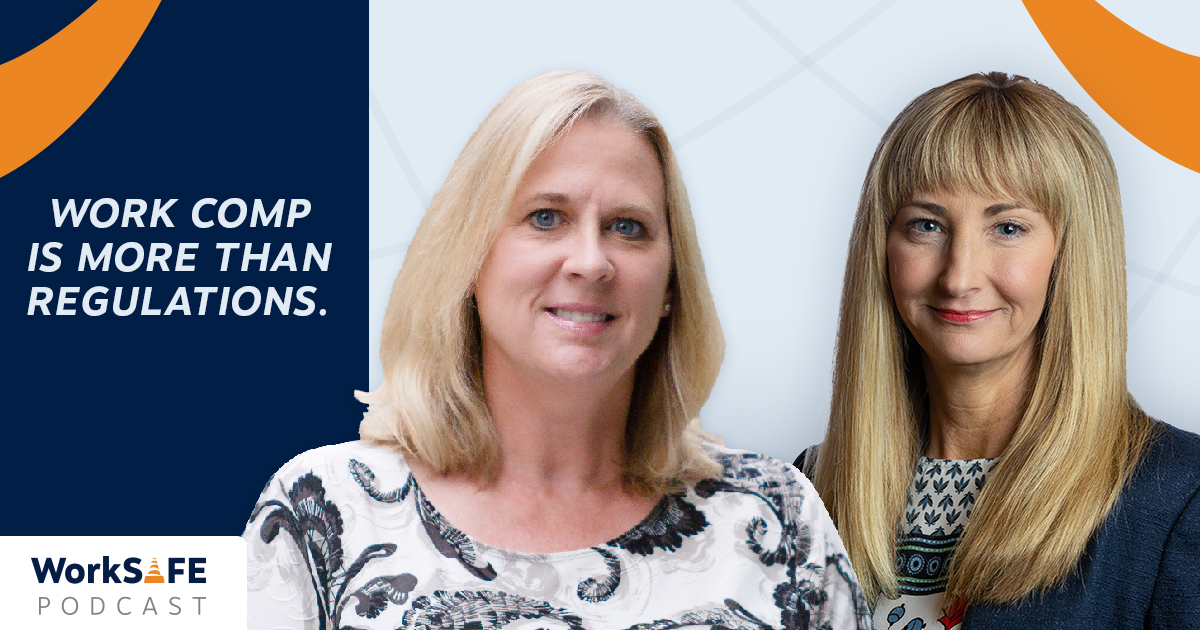For Media Inquiries
Contact Revee White, Director of Marketing and Communications at rwhite1@mem-ins.com or 573.499.4190.
Work comp is a valuable form of protection. It provides coverage for medical care, lost time and other vital expenses. However, safety regulations are closely tied to work comp benefits. What is the connection between them, and how can they impact both employers and employees?
On this episode of the WorkSAFE Podcast, we welcome a returning guest, Rhonda Kauffman. She has over 20 years of experience in occupational safety and industrial hygiene. She provides assistance and training for employers who want to bring health and safety programs to their workplaces.
First, we’ll explain what work comp regulations are. Then, we’ll talk through the best practices to ensure compensable claims. Finally, we’ll share three methods employers can use to work towards better outcomes.
Listen to this episode of the WorkSAFE Podcast, or read the show notes below.
What are regulations?
Regulations are rules, directives or laws. They typically come from a government organization. For example, the Occupational Health and Safety Administration (OSHA) or the U.S. Environmental Protection Agency (EPA). They can also include laws set by local or state governments. The rules they set must be followed by all businesses. Not following them could result in fines or even criminal charges.
Which regulations do business owners need to follow?
Every industry has different regulations. A construction site, an office and a restaurant will all have specific rules they need to follow. Kauffman suggests the following tips for business owners:
- Start with the basics. What are the basic safety risks and health hazards for your industry? List them out. Learn what rules are in place for preventing them.
- Learn from industry experts. Does the business owner or manager have experience in the industry? Talk to them. Learn from their past experience.
- Join an association. Is there a recognized group for your industry? Become a member. Attend meetings often. Ask what resources they may offer.
What is compensation?
Compensation is often thought of as an owed benefit. In the world of work comp, it is typically a financial benefit. It helps offset the impact of a workplace incident. For instance, money given for lost time, medical care and related costs.
Best practices to ensure compensable claims
A common belief is that if you follow safety regulations, any claims will be compensable, or that benefits will be able to be paid. But is this true? Every claim is different. For example, just because an injured worker broke a safety rule doesn’t always mean the claim won’t be compensated. However, there are best practices employers can follow.
“Best practices for a business is, number one, just to evaluate and recognize what they might have within their operations just as soon as possible,” Kauffman shared. First, identify any safety risks and health hazards found. Then, set safety rules and policies that address them.
“Following the regulations really is not in itself enough to say ‘we’re not going to have any injuries in our workplace’,” she explained. But they should serve as a starting point for employers. “Business owners should remember that OSHA regulations are considered by most safety professionals as minimum requirements,” Kauffman reminded listeners. “It can take a long time for OSHA to develop and issue and even update their regulations.”
A positive safety culture is needed to make safety regulations stick in the workplace. This includes not only following safety regulations, but applying rules and policies specific to your business or employees. Set up regular employee safety training to make sure teams know and understand how to work safely.
3 methods that lead to better safety outcomes
Building a safety culture is key to preventing illness and injury. Having one leads to better safety outcomes. But business owners don’t have to try to do this alone. They can start today by using:
- Outside expertise. For instance, safety consultants, a business owner’s work comp carrier or insurance agent. Businesses on a tighter budget can start on the web with reputable sources, such as our free Resource Library. It includes industry-specific Toolbox Talks, sample policies and forms.
- Post-offer employment testing (POET). POET ensures potential employees are physically capable of performing a specific job. It can identify early health issues and prevent on-the-job injuries.
- Management’s leadership. If you set new safety rules, then employees will watch to see if leadership is following them. Leaders must set an example for employees. This will help set expectations.
“It’s a two-way street,” Kauffman finished. “Management needs to set the expectations for safety, communicate those expectations to their employees, and then employees need to reciprocate by following those safety expectations. In the end. it’s a win-win. Everybody stays safe and they get to go home from work safe every day.
For free safety posters, sample policies, and safety toolkits, visit our Resource Library. Then, tune in to Kauffman’s previous podcast episodes, where she discusses important safety topics like clean air and the use of masks in the workplace.
